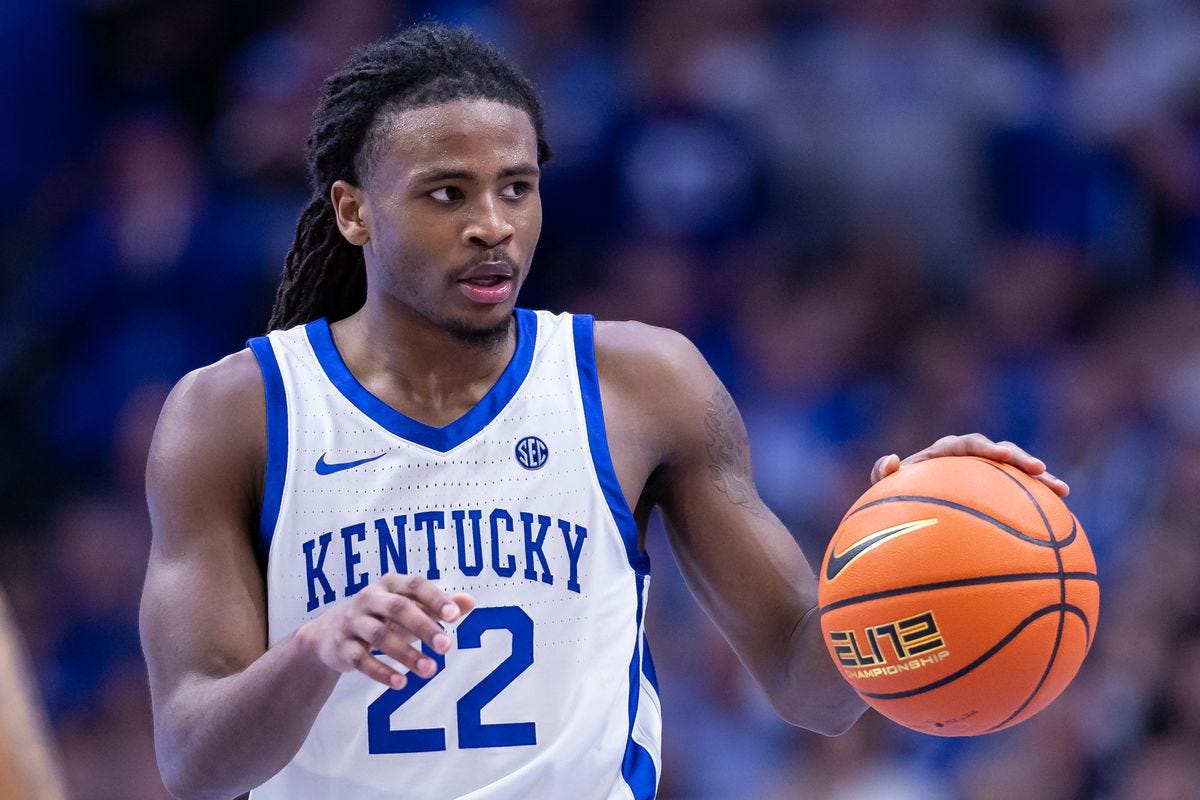Cason Wallace: 2023 NBA Draft Scouting Report
Kentucky first-round guards rarely disappoint in the NBA. Does Wallace fit the bill as the next Wildcat great or is he destined to be more of a role player in the future?
The Kentucky Effect is pretty well documented at this point.
Guards who have played for John Calipari over the last decade and been drafted in the first round have a pretty insane success rate in the pros:
2022: Shaedon Sharpe & TyTy Washington
2020: Tyrese Maxey & Immanuel Quickley
2019: Tyler Herro
2018: Shai Gilgeous-Alexander
2017: De’Aaron Fox & Malik Monk
2016: Jamal Murray
2015: Devin Booker
Almost all of those players were siphoned into singular roles in Lexington. They’d either play as ball-dominant point guards (Fox, Gilgeous-Alexander, Maxey) or movement shooters who dart off screens and cut through the baseline all day (Booker, Murray, Herro, Quickley).
Cason Wallace is one of the few players who was given the leash to do both and show off the versatility of his offensive game at Kentucky. Wallace’s in-season shift was somewhat borne of necessity, as a change to the rotation took place in mid-January. But a glimpse into his impact as a spot-up shooter and as a self-creator should impress upon teams that he’s a far better offensive player than the shackles placed upon him in either role allowed him to consistently show.
Regardless of whether Cason projects to follow the long line of All-Star scorers who have departed Calipari’s program, he brings one skill to the table that virtually none of those others can boast: he is an elite on-ball defender.
The metrics are pretty strong for Wallace despite being a slightly-undersized 6’3” guard. He averaged 3.0 stocks per 40 minutes, the product of a 1.6% BLK rate and 3.7% STL rate. He’s hoping to be the first freshman draft pick to hit those numbers while making at least 40 3-pointers since James Harden — regardless of size.
The eye test for Cason is so much more impactful. His off-ball rotations are instinctual and impactful. His lockdown strength to guard up the lineup is notable, and his discipline to stay down against shot fakes or win first steps against drivers commendable.
The arc to the season for Wallace was interrupted by injuries, both to him and teammates. But that did not stop him from having a positive impact on the Wildcats.
With Sahvir Wheeler as the starting point guard (until January 10th), the Wildcats posted a 109.3 adjusted offensive rating, according to Barttorvik. After that point, when Wallace was given the reigns, the Wildcats boasted a 115.7 adjusted offensive rating, which was a top-20 mark in the country over that period.
I’ve been a fan of Wallace dating back to his high school days. The way he moves, competes, understands the game, and has a diversity of offensive skill makes him incredibly appealing to be either the highest-end role player or potentially turning into a focal point just as other Kentucky guards have before him.
Offense
Wallace split times between those offensive roles this season, so I want to break down each of them. Starting with the spot-up role (where I think his NBA usage will be higher initially), there are a lot of positive signs that Cason will shoot the ball adequately. Prior to that January 10th date when Wheeler was sidelined, Wallace was shooting 41.9% from 3-point range on five attempts a game while maintaining a more than two-to-one assist-to-turnover ratio.
During the next game, Wallace began to suffer back spasms. He played only eight minutes against South Carolina before exiting, then gutted out his next performance at Tennessee in a game he clearly looked uncomfortable. Wallace went just 24.5% from deep for the rest of the season.
Some may call that the regression to the norm, but so many factors need to be examined. His catch-and-shoot attempts went down from that point forward, taking more on-ball reps in the offense. He was often the lone shooter on the floor and SEC teams keyed into him a bit more than non-conference opponents — especially low-majors who needed to commit their entire identity to stopping Oscar Tshiebwe inside. More than any of them, a back injury is really difficult to shoot through. Mechanics change and become stiffer, hips can’t function the way they normally do, and legs wear throughout the course of a game trying to compensate for the injury.




